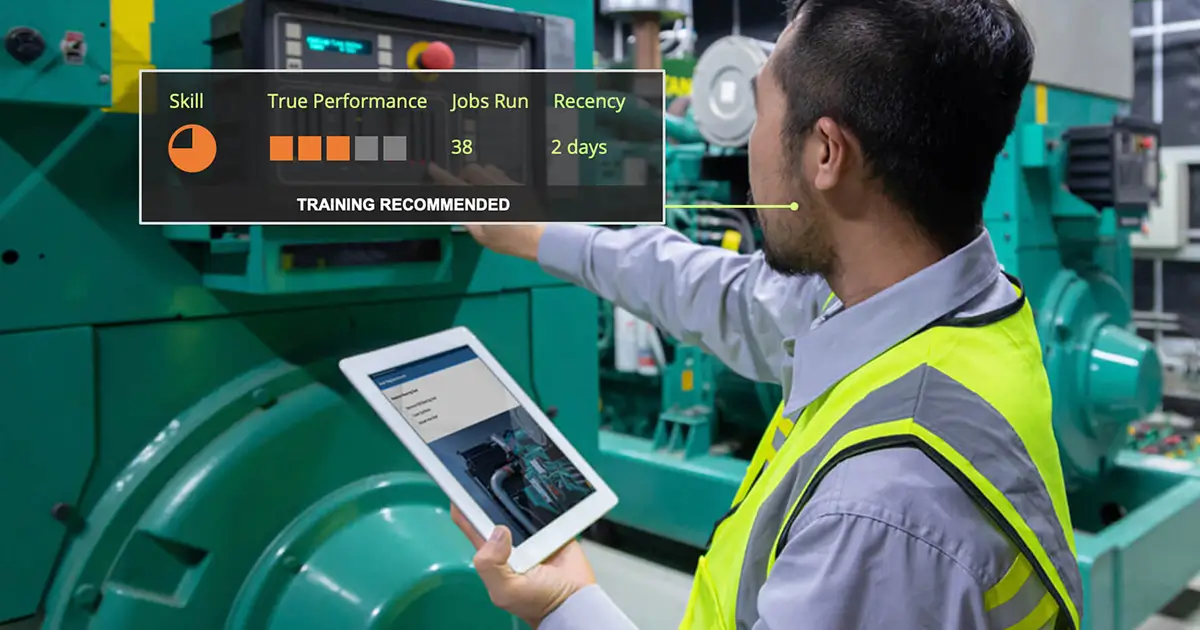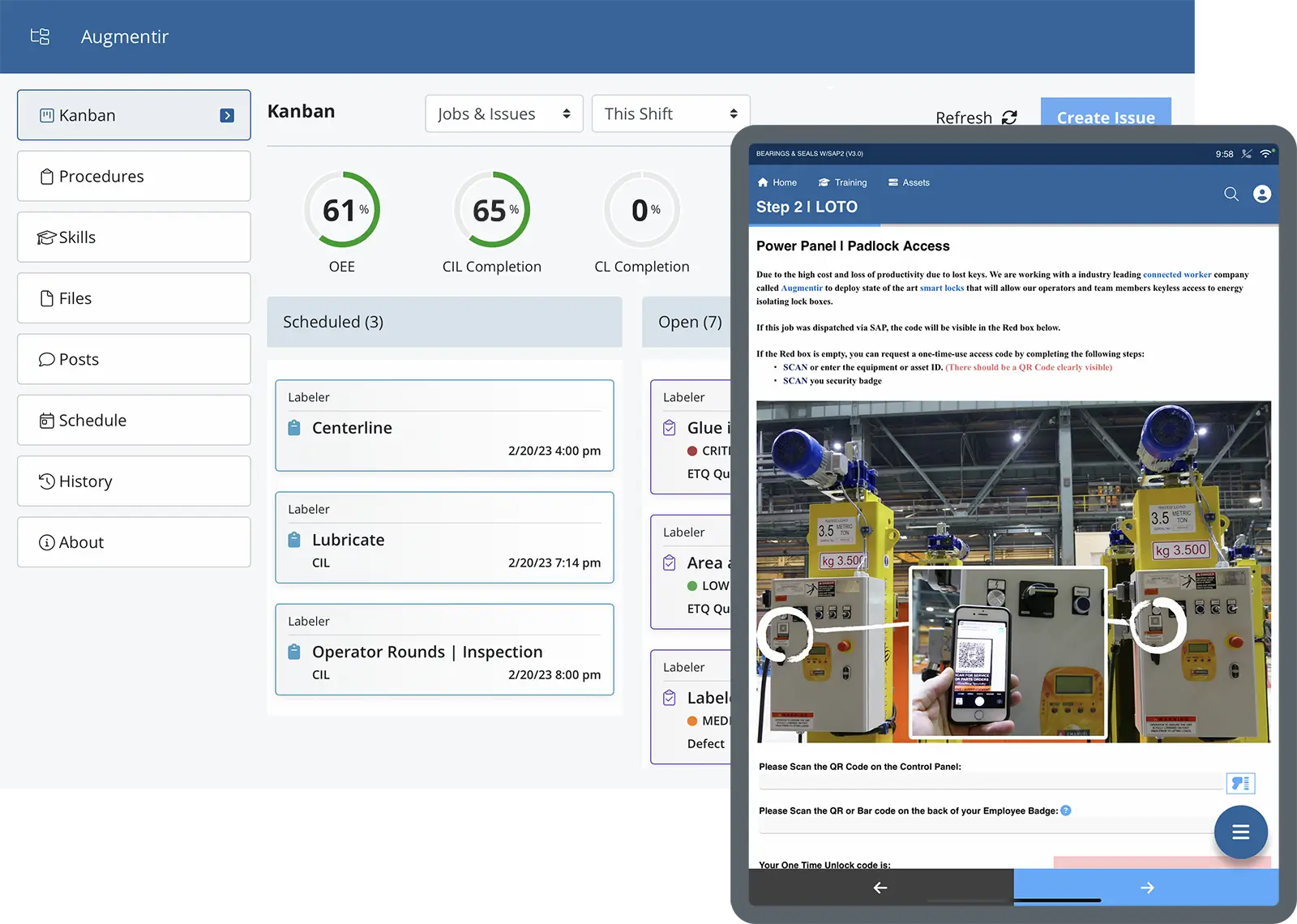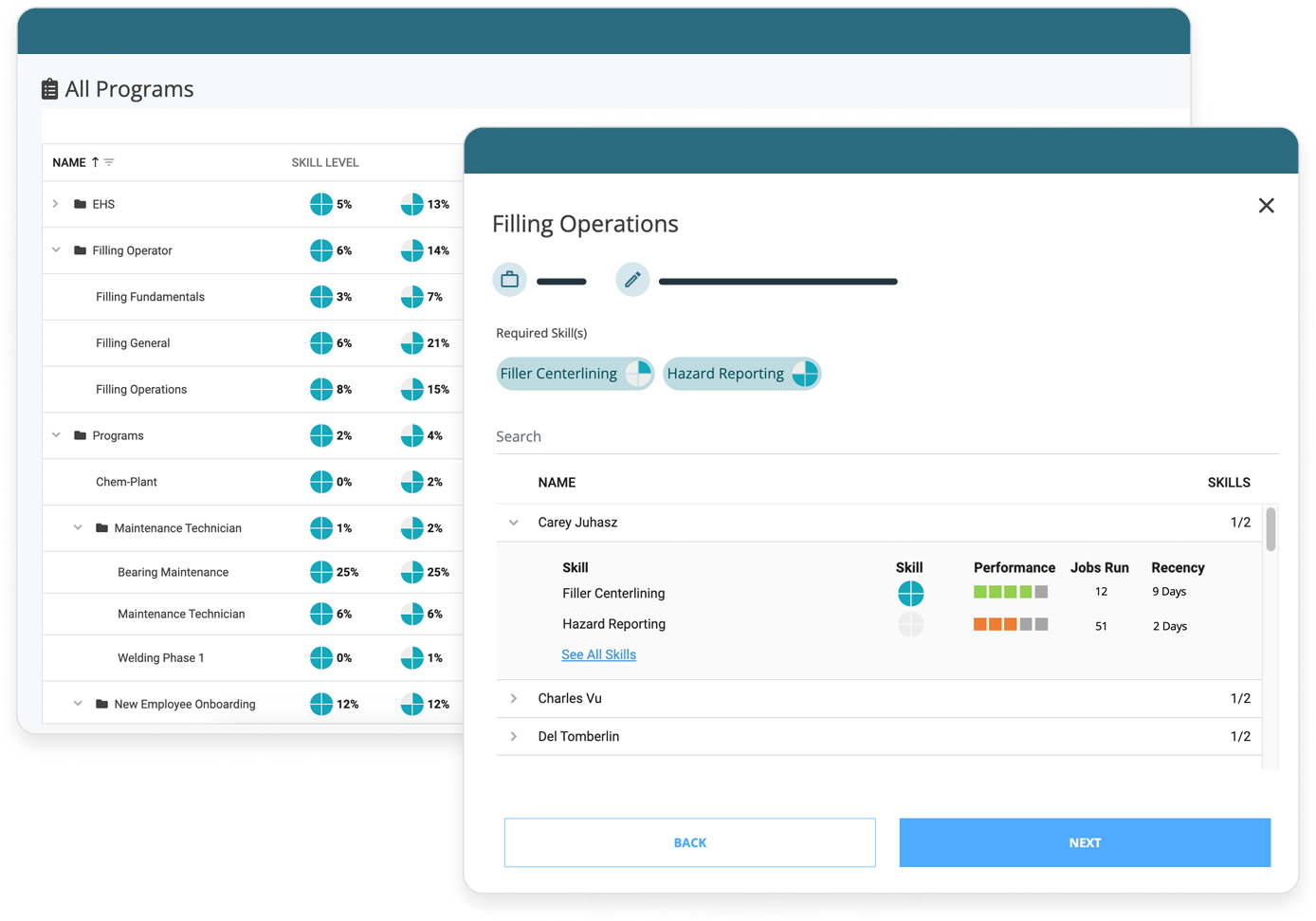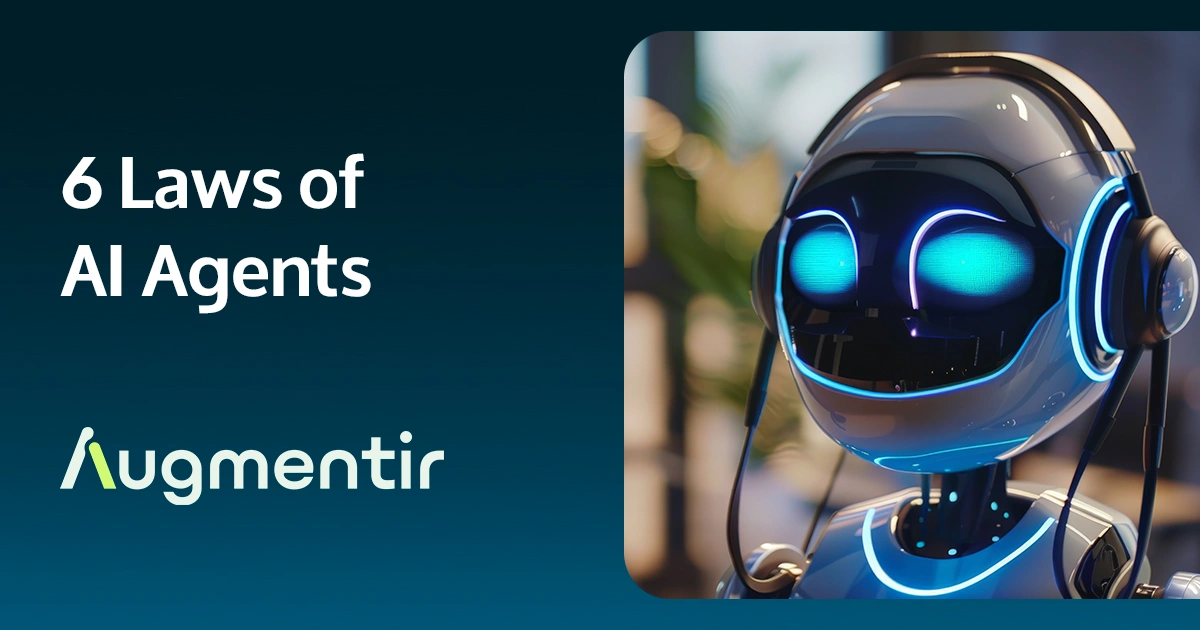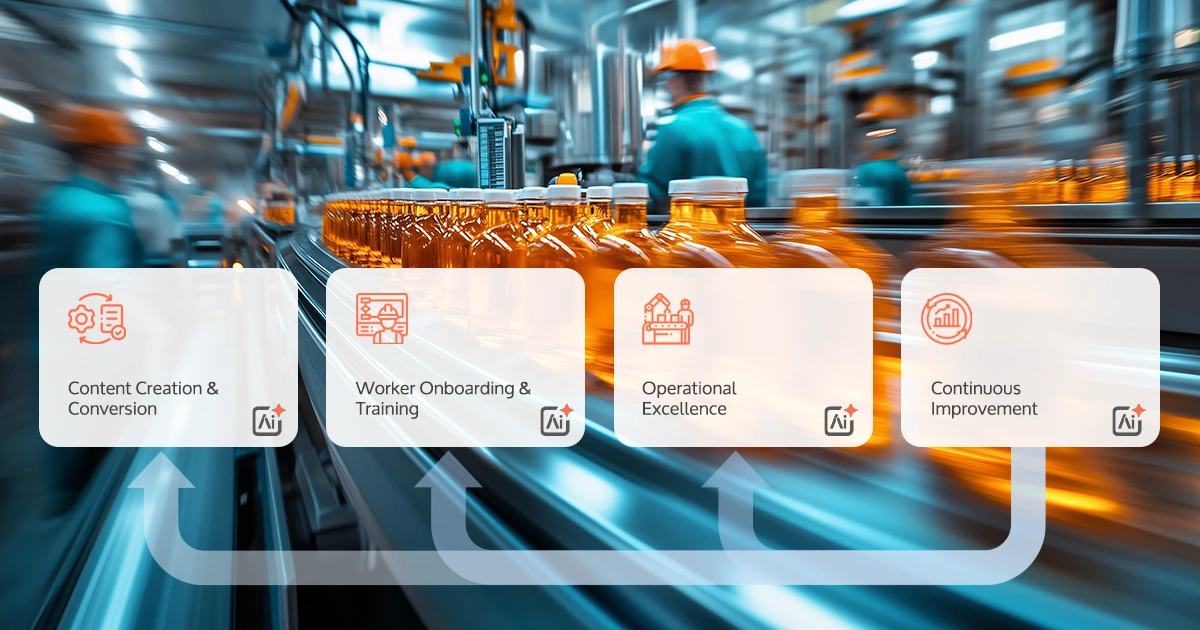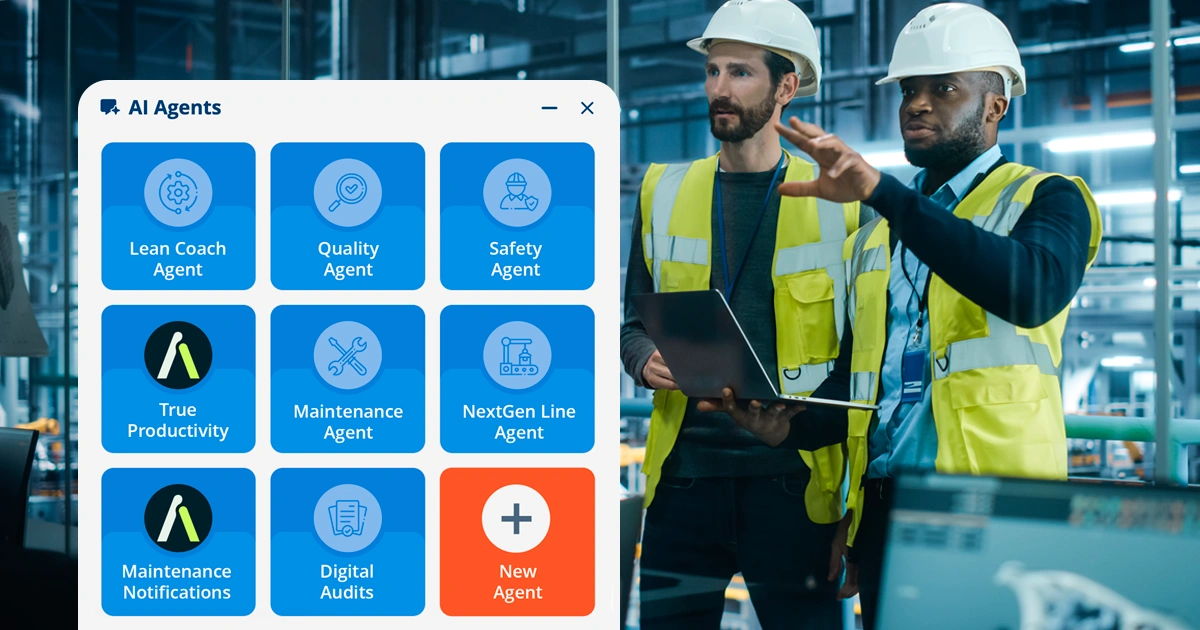The benefits of digital work instructions go far beyond simply standardizing work. The real benefit is in personalized guidance and support for today’s workers.
Digital work instructions are step-by-step directions on the best way to complete any task, from basic maintenance to fixing equipment. These digitized instructions are electronic versions of work procedures that are kept in a centralized system so workers can easily access them to work on tasks or to make timely decisions on projects. While the benefits of digital work instructions are numerous, the real benefit in manufacturing comes when digital work instructions can be personalized to the unique needs and skills of each worker.
So say goodbye to static documentation and hello to a new era of personalized digitization. If you’re interested in learning the real benefits of digital work instructions, read on about the following:
- How digital work instructions are transforming manufacturing processes
- The real benefits of digital work instructions
- FAQs about digital work instructions
How digital work instructions are transforming manufacturing processes
Traditional instructions on paper can slow down a manufacturing operation. They can be lengthy, become quickly outdated, and are often full of mistakes. With paper-based reporting, for example, workers may forget to note the condition of equipment or update a faulty procedure.
Fortunately, digital instructions are an ideal solution. They offer visual demonstrations, how-to videos, and other resources for completing tasks. Most importantly, when digital work instructions are managed and delivered through a connected worker solution, they can be kept up-to-date to ensure compliance and product quality. According to Quality Magazine, not only do digital work instructions support overall enterprise productivity, but they also provide workers with an improved level of control over their work through enterprise data and automated insights.
When you digitize your procedures, they can be accessed and kept up to date from wherever employees work. They can be enhanced with visual aids, contextual information, and augmented reality experiences to guide workers through complex jobs. Best of all, workers are less likely to make mistakes or miss steps when they can easily refer to clear and visually engaging information.
Digital work instructions are maintained via a connected worker solution, and delivered through mobile or wearable devices on the shop floor. These solutions can be coupled with AI-powered software to further help companies digitize production procedures.
This leads to greater worker productivity and output.
The real benefits of digital work instructions
Digital work instructions provide countless advantages when implemented throughout your entire organization, including improved production processes, decreased downtime, greater operational competence and safety, as well as support for a centralized database of knowledge. On their own, they deliver standard work guidelines but fail to consider the unique skills of each worker, which is increasingly important in today’s evolving and labor-constrained workforce. The typical one-size-fits-all approach to managing, guiding, and supporting employees won’t cut it in today’s market.
Businesses need a solution that helps them improve manufacturing processes and meet their workers where they are.
This is where AI-based solutions come in.
Using AI-based connected worker solutions, organizations can digitize and easily manage skills tracking and training programs and connect them with frontline operations. Embedded AI can dynamically optimize work processes to deliver training in the flow of work, tailored support, and more. Solutions that combine skills tracking capabilities with connected worker technology and on-the-job digital guidance can deliver significant additional value. Data from actual work performance can inform workforce development initiatives allowing you to target your training, reskilling, and upskilling efforts where they have the largest impact.
It can generate an abundance of valuable data to provide tailored training support and skills endorsements and identify workforce opportunities. These benefits extend beyond simply standardizing work to include:
1. A more motivated, more engaged workforce
An organization’s commitment to cultivating its team’s skills can influence their attitudes toward the job. A worker is likelier to perform better when valued and appreciated. Digitized skills tracking also ensures that workers are qualified to perform their job.
2. Mitigate risk and ensure safety
Solutions that include personalized work instructions that incorporate worker skills allow organizations to validate at the time of work assignment who has the skill level to safely perform a specific task. This helps to mitigate risk and ensure safety.
3. Intelligently assigning work
Ensure the right person is assigned to the right job. Manage work assignments based on skill level, endorsements, and actual job performance.
4. Closes the skills gap
Tracking skills is a great way to identify gaps between the skills employees already have and the skills they need. With this information, the company can arrange for additional training or other ways to invest in their employees. Keep in mind that as your manufacturing organization evolves and grows, so should your employee skillset.
6. Identify upskilling or reskilling opportunities
Use data from actual work performance, combined with an employee’s current skills and endorsements to inform your reskilling and upskilling decisions. Knowing where improvements need to be made can close any learning gaps and boost the overall success of a company. Optimizing your workforce can help improve productivity in every department, giving your company a competitive edge in today’s market.
Connected worker solutions that combine skills management with digital work instructions, collaboration, and knowledge management are uniquely suited to optimize today’s variable workforce. AI-generated insights are pulled from patterns identified across all work activity in real-time. These insights identify where new and experienced workers may benefit from either reskilling or upskilling.
This combination of smart digital technology can also leverage your training resources, such as instructional videos, written instructions, or access to remote experts, to deliver personalized guidance for the worker to perform their best. These tools intelligently work together to help you assign workers to procedures based on required skill levels.
FAQs about digital work instructions
What is the purpose of digital work instructions?
Digitized work instructions provide clear, step-by-step directions on how each manufacturing task should be performed. They are kept in a centralized database for real-time view of procedures, how-to videos, training opportunities, and more. Companies implement them in order to improve workers’ procedural knowledge, ensure standard work compliance, reduce mistakes, and raise production quality overall.
How can digital work instructions help manufacturers?
Digital work instructions help manufacturers create a more productive workforce that values detail, quality, and learning. Work instructions can be updated to fit best practices, reduce human error, and provide learning opportunities with visual cues like videos, pictures, augmented reality experiences, and more.
Which work instruction software is right for me?
Although there are different software programs out there, Augmentir is the world’s leading connected worker solution, and the only solution that uses AI to personalize instructions based on individual worker proficiency and skill levels.
How Augmentir’s digital solutions can help
Digitizing work instructions is a great start to address manufacturing issues, however, alone, it won’t help completely solve some of the biggest workforce challenges. It’s not enough to simply move from paper-based to digital work instructions.
We must go a step further, for example, Augmentir’s platform provides complete digital workflow authoring tools that allow you to not only quickly convert your paper-based processes to digital work instructions, but also use AI to dynamically personalize them to the needs of your individual workers.
- Digital work instructions, augmented with visual aids, contextual information, and industrial collaboration tools, help intelligently guide workers through complex jobs
- Complete workflows allow you to digitize complex business processes
- Embedded AI dynamically optimizes work procedures and workflows to deliver in-situ training and support

